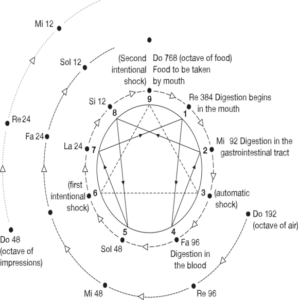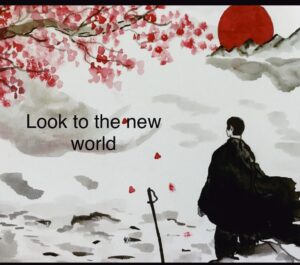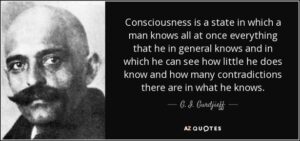Practical Gurdjieff Experience in Self-Observation and Self-Remembering
My Aim — To bring ‘the work’ to a more practical and simplified approach. The young people I work with seem to have a much easier time with this. I will present the presentation Dominic Bucci and I did for the Theosophical Society of America http://theosophical.org/. I am also taking material from the 10 years I worked with Sy Ginsburg in online Gurdjieff groups. Much of the material was taken from the writings of Sy Ginsburg from GURDJIEFF UNVEILED.
“Man is a machine, everything with him happens. He cannot stop the flow of his thoughts, he cannot control his imagination, his emotions, his attention. He lives in a subjective world of ‘I love,’ ‘I do not love,’ ‘I like,’ ‘I do not like,’ ‘I want,’ ‘I do not want,’ that is, of what he thinks he likes, of what he thinks he does not like, of what he thinks he wants, of what he thinks he does not want. He does not see the real world. The real world is hidden from him by the wall of imagination. He lives in sleep. He is asleep.”
Gurdjieff, Quote By P. D. Ouspensky, In Search Of The Miraculous
Basic Points Considered for the practical WORK
-
Four States of Human Consciousness
-
Man #1, 2, 3, and 4 on planet Earth
-
Transferring Personality to Essence — Building Soul
-
Five Centers of Man
-
Five Obligonian Strivings
-
A brief explanation of the Enneagram at work
-
Internal/External consideration
-
Self-Observation/Self-Remembering — Awareness Continuum
-
Attention
Expanding consciousness
The Work is the development or expansion of our consciousness, especially the consciousness of ourselves, and the Gurdjieff Work teaches us how to become conscious and live here and now. We can say that Gurdjieff allows us to “wake up” and “be” in the present. The Work is intended to help men and women to become more conscious and to acquire all the advantages and powers that self-consciousness brings. Indeed, the only real evolution, the evolution of which all esoteric teaching speaks, is the evolution of consciousness. Mechanical or Darwinian evolution only provides the vehicles or forms through which consciousness most effectively manifests itself.
What is surprising about consciousness, about the state of being “conscious,” is that people believe that they are always conscious. We live in the certainty of being conscious, of being responsible for our actions, and certain that others are also conscious and responsible. But in reality, we are not conscious in the sense that we do not possess the consciousness of which the human being is capable.
Ask yourself: “What am I conscious of?” “What am I conscious of at this precise moment?” “Am I conscious of myself while I read or listen to these words?” “What does ‘am I conscious of myself’ mean?
You can see that it is not possible to answer these questions, not with words, at any rate. Perhaps these questions disturb you and make you think of the mystery that consciousness represents. But consciousness need not remain a mystery. We begin to understand consciousness and to expand consciousness by including the consciousness of ourselves in our attention.
It is even possible, if not probable, that by simply speaking about it, our consciousness of self and our general state of awareness becomes greater. But in the absence of a real desire to acquire, keep, and perfect a state of consciousness greater than ordinary consciousness, this state of expanded consciousness rapidly disappears. We do not usually live with that aim in mind and so we do not know what is the effort necessary to become and to remain more conscious. To strengthen one’s consciousness and make it more durable, one must not only desire it, but also must try to find out how to act towards such a goal, what we must do to achieve the aim of acquiring, keeping, and perfecting the state of a greater consciousness.
We may even resonate with the same vibrations as the enlightened being, and in that sense being in such a person’s presence may give us a momentary experience of enlightenment, a reflection in us of what is apparent in the enlightened being. That person is a reflection of what is deeply in us. But the experience is soon gone because, without our effort to connect with our essence, there is nothing permanent within us to remain enlightened.
However, what we call “effort” in ordinary everyday life is not sufficient. The inner effort to become more conscious must first be learned and then practiced. It requires a deep study of various subjects and a lot of hard work to follow and execute the instructions given by the system being followed.
Only through methodical and persistent practice of the techniques can we expand our consciousness. Throughout this text, we shall take up some of the techniques for human beings to become more conscious.
We may even resonate with the same vibrations as the enlightened being, and in that sense being in such a person’s presence may give us a momentary experience of enlightenment, a reflection in us of what is apparent in the enlightened being. That person is a reflection of what is deeply in us. But the experience is soon gone because, without our effort to connect with our essence, there is nothing permanent within us to remain enlightened.
However, what we call “effort” in ordinary everyday life is not sufficient. The inner effort to become more conscious must first be learned and then practiced. It requires a deep study of various subjects and a lot of hard work to follow and execute the instructions given by the system being followed.
Only through methodical and persistent practice of the techniques can we expand our consciousness. Throughout this text, we shall take up some of the techniques for human beings to become more conscious.
In ordinary life, we become conscious of ourselves only when we receive a “shock.” If, for example, there is a loud noise, such as an explosion, we become very conscious of our presence, and often a person in that state of enhanced awareness no longer acts as he or she usually does. He or she is temporarily liberated from inhibitions and mental paralysis. In these urgent circumstances, he or she knows at once what must be done and acts rapidly, without hesitation. But real crises happen only rarely and so we remain unconscious during the greater part of our life.
If you are asked the question: “Are you conscious of yourself?” you will answer: “Yes, certainly,” and it will be true, since the question has momentarily called you back to this consciousness of yourself, one of the technical terms for which is “self-remembering.” For our purposes, we can also use the terms “self-consciousness” or “self-awareness” to represent this state, although many students of Gurdjieff’s teaching have attempted to make distinctions between these three terms.
However, unless you know what the necessary inner effort is to remain in that state, it disappears as fast as it appeared.
Below is a diagram of how the enneagram works with the system of shocks, and conscious shocks coming from our continuous work on ourselves.

